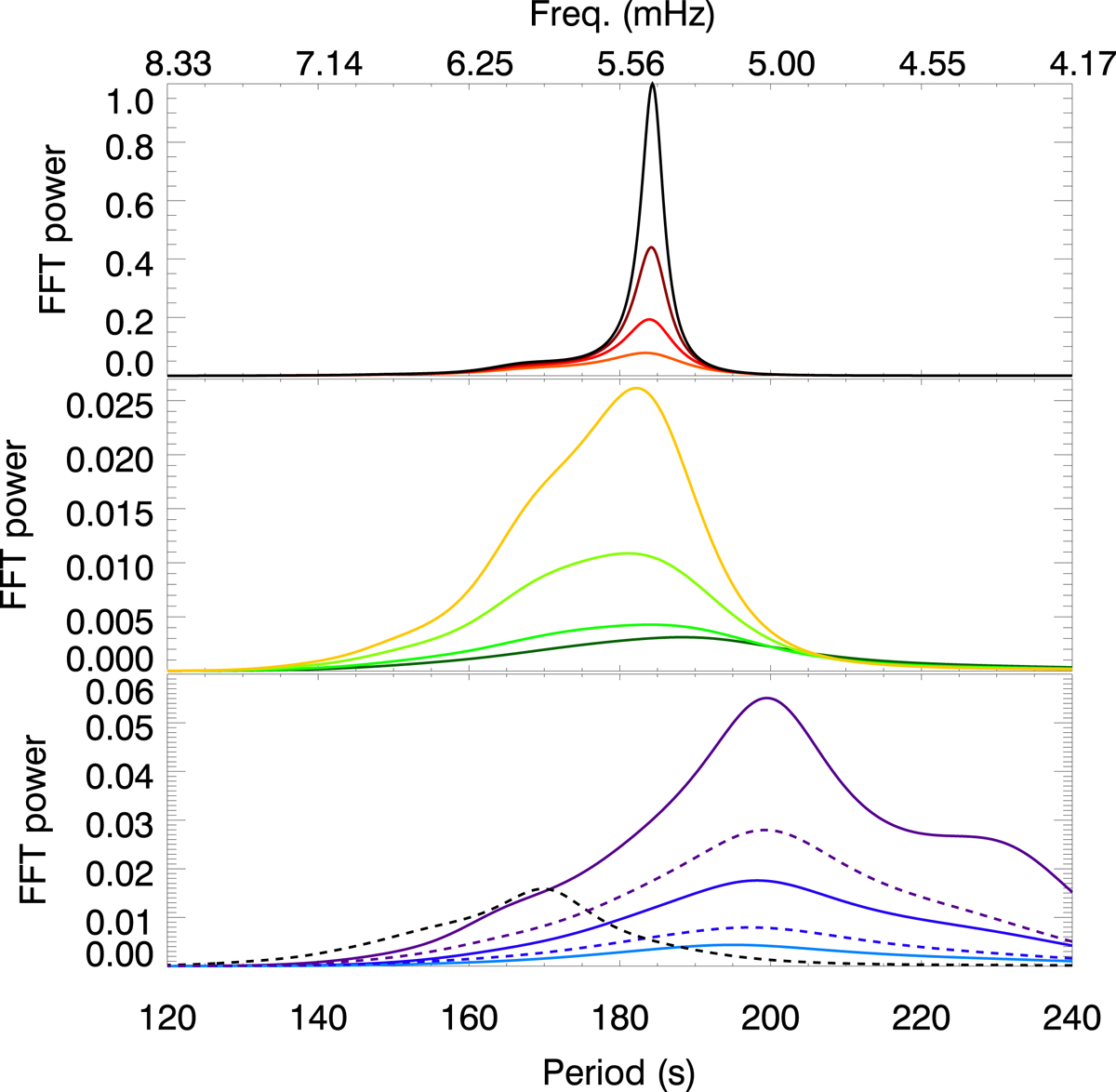Fig. 8.

Power spectra of the vertical velocity at z = 1.4 Mm from numerical simulations with various values of the radiative cooling time. In all cases waves are excited by a broadband driver and the magnetic field is set to zero. Each panel illustrates a different set of simulations (we note the differences in the range of the vertical axis). From top to bottom, the radiative cooling time is infinity (black line, Simulation 3.5.1), 3000 s (dark red line, Simulation 3.5.11), 1200 s (red line, Simulation 3.5.10), 600 s (orange line, Simulation 3.5.9), 300 s (yellow line, Simulation 3.5.8), 180 s (light green line, Simulation 3.5.7), 100 s (green line, Simulation 3.5.6), 70 s (dark green line, Simulation 3.5.5), 40 s (light blue line, Simulation 3.5.4), 20 s (dark blue line, Simulation 3.5.3), and 10 s (violet line, Simulation 3.5.2). Solid lines indicate simulations with the base of the corona located at 2.0 Mm. Dashed lines indicate simulations without a transition region or corona, with a radiative cooling time of 10 s (violet dashed line, Simulation 3.5.12), 20 s (dark blue dashed line, Simulation 3.5.13), or infinity (black dashed line, Simulation 3.5.14). All the power spectra are normalized to the same value used for the normalization of the power spectra illustrated in Fig. 6.
Current usage metrics show cumulative count of Article Views (full-text article views including HTML views, PDF and ePub downloads, according to the available data) and Abstracts Views on Vision4Press platform.
Data correspond to usage on the plateform after 2015. The current usage metrics is available 48-96 hours after online publication and is updated daily on week days.
Initial download of the metrics may take a while.


